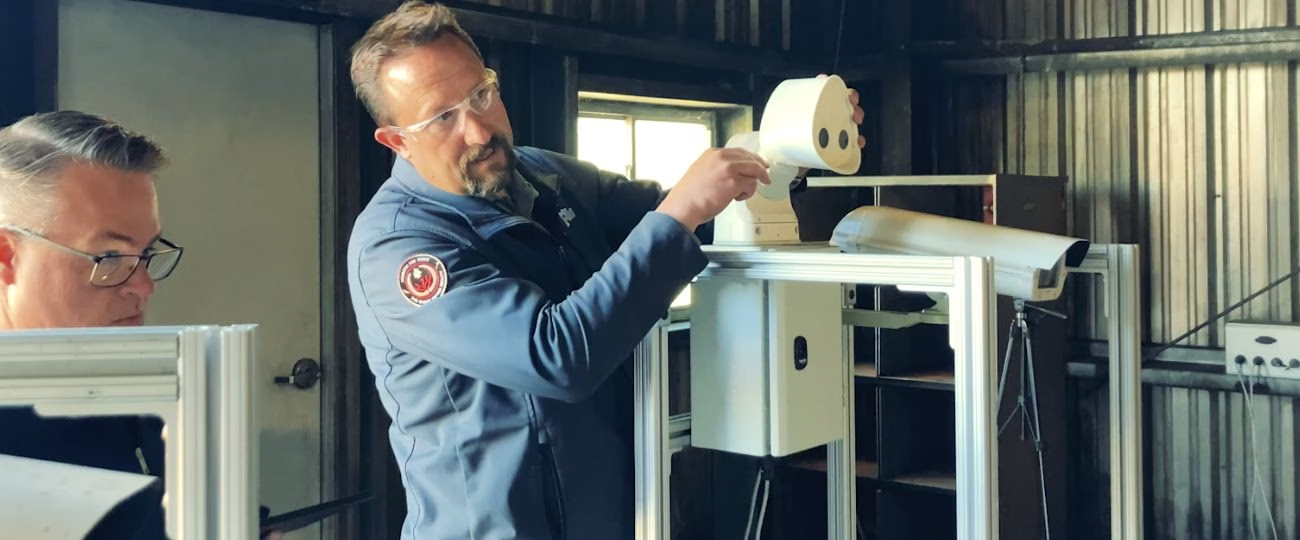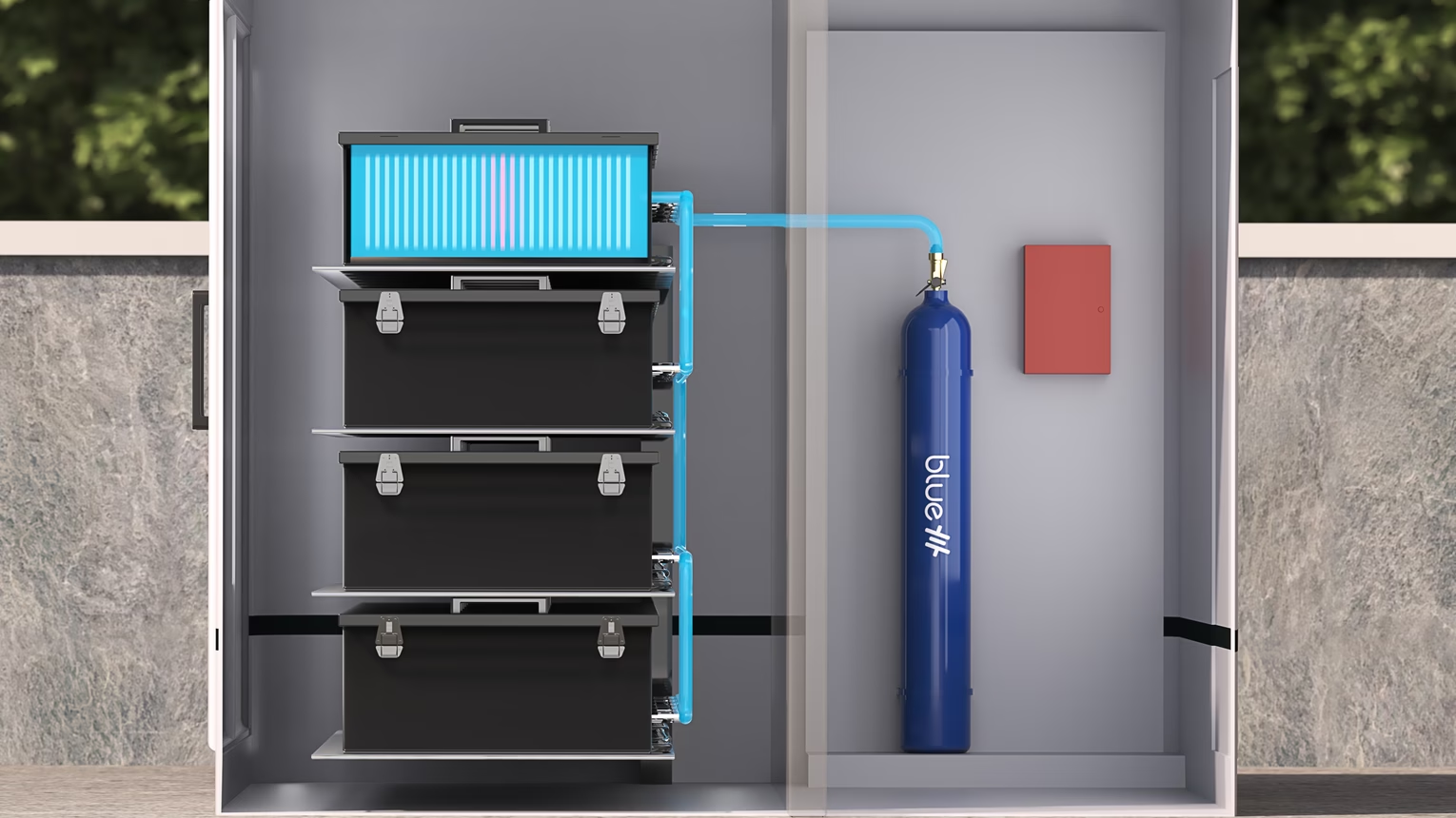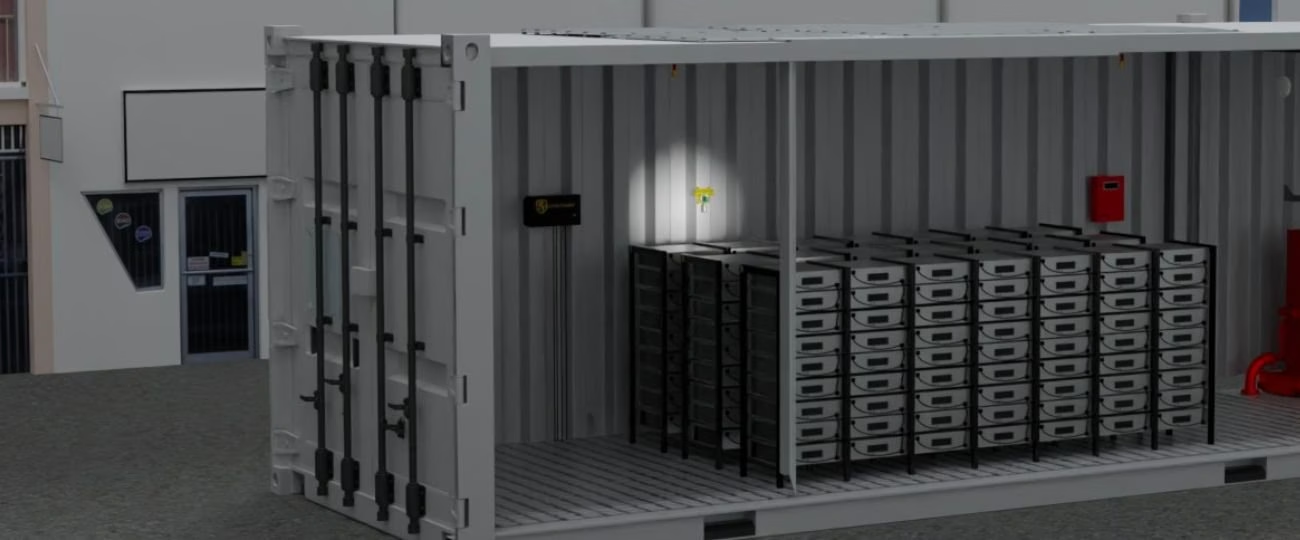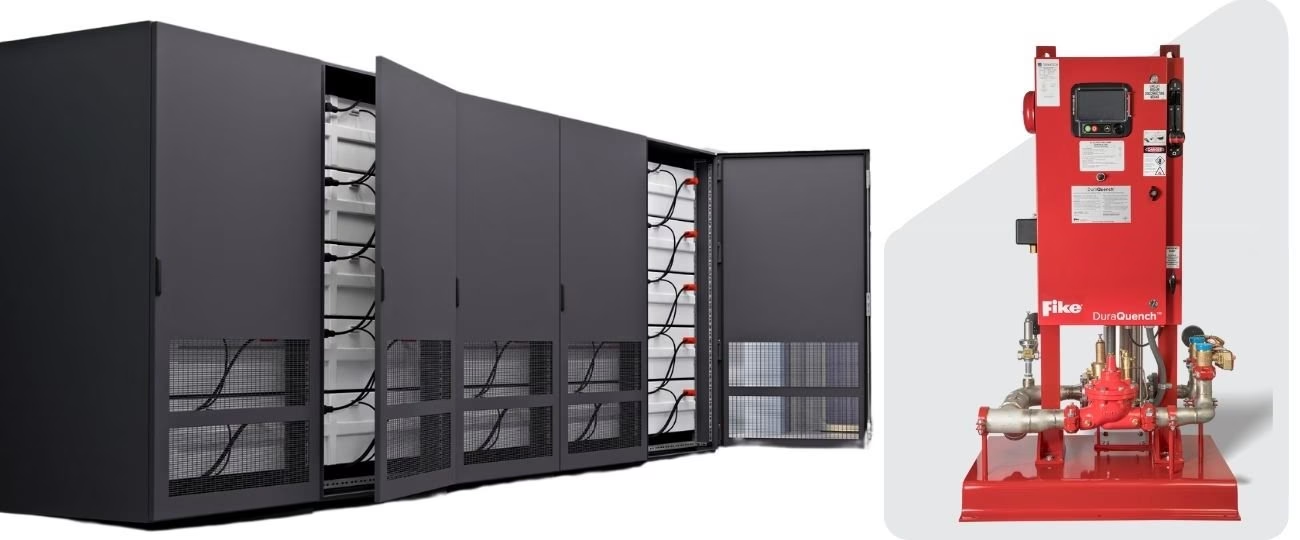Battery Energy Storage System
Energy Storage Systems (ESS’) often include hundreds to thousands of lithium ion batteries, and if just one cell malfunctions it can result in an extremely dangerous situation. To quickly mitigate these hazards, Fike offers comprehensive safety solutions, including the revolutionary thermal runaway suppressant, Fike BlueTM.
How Do Lithium Ion Batteries Catch Fire & Explode?
In April 2019, seven Arizona firefighters were hurt and one was killed from an explosion occurring within a ESS shipping container. The source of this hazardous situation was caused by an unpredictable and extremely dangerous phenomenon called “thermal runaway,” where just one malfunctioning battery can create a chain reaction into adjacent batteries and produce flammable gases and fire in the enclosed space. Here’s how cascading thermal runaway occurs:
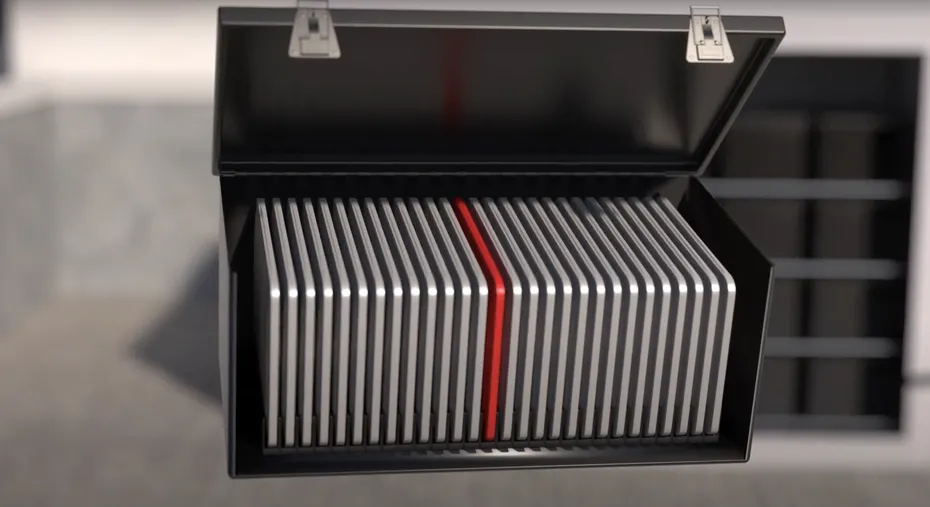
Battery Malfunctions
The battery’s internal temperature quickly exceeds its normal operating range and begins to self-heat.
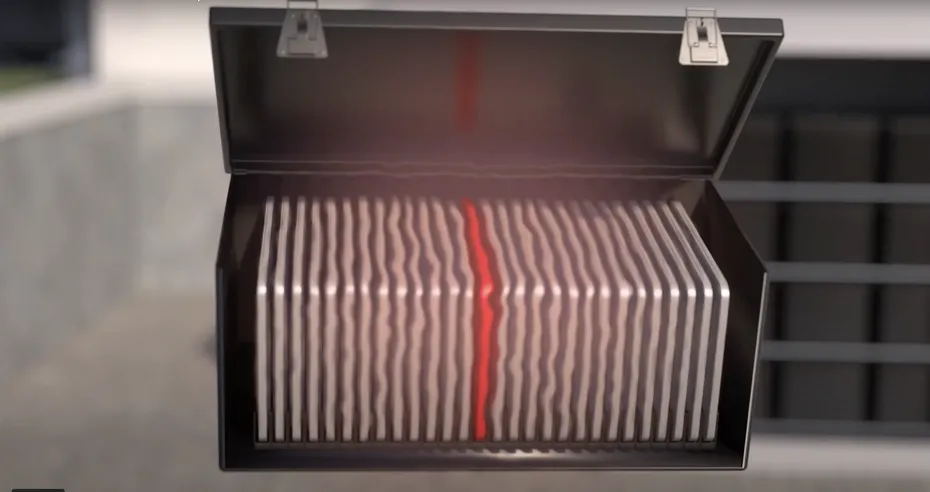
Off-gas Releases
Explosive gases such as hydrogen are released as a byproduct of thermal runaway.
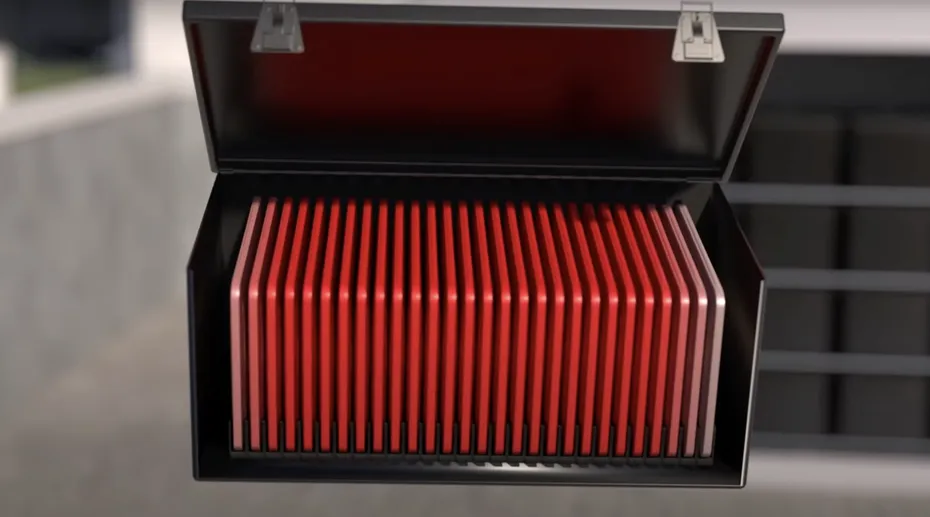
Hazard Spreads
Nearby batteries begin to malfunction as well from the intense heat, creating a chain reaction.
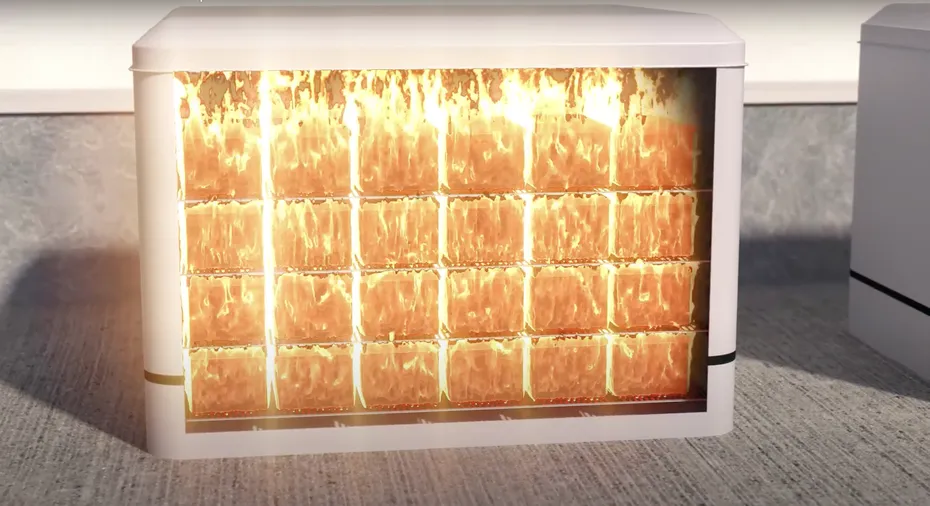
BESS Consumed
Without early warning fire protection systems, the entire unit will be engulfed in flames.
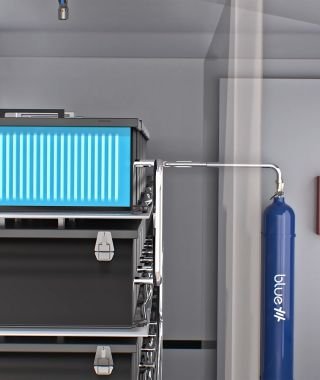
Fike Blue cooled our internal module temperatures from several hundred degrees celcius to under one hundred degrees and prevented cascading thermal runaway in most of our battery cells—a true engineering breakthrough.
Director of Mechanical Engineering at a Major ESS Manufacturer
Fike’s Strategy of Protecting an ESS from Lithium Battery Fires
Explosion Venting Systems
While using Fike Blue is the preferred solution in most ESS applications, there are various scenarios (such as ESS’s in remote locations) where Fike explosion vents provide the desired level of protection.
If thermal runaway occurs and results in a deflagration, the explosion vents will burst at a predefined burst pressure, releasing the pressure and flames in a controlled manner and thereby preventing an uncontrolled rupture of the vessel. The Fike team can help determine whether explosion venting is a viable strategy for your unique situation.

